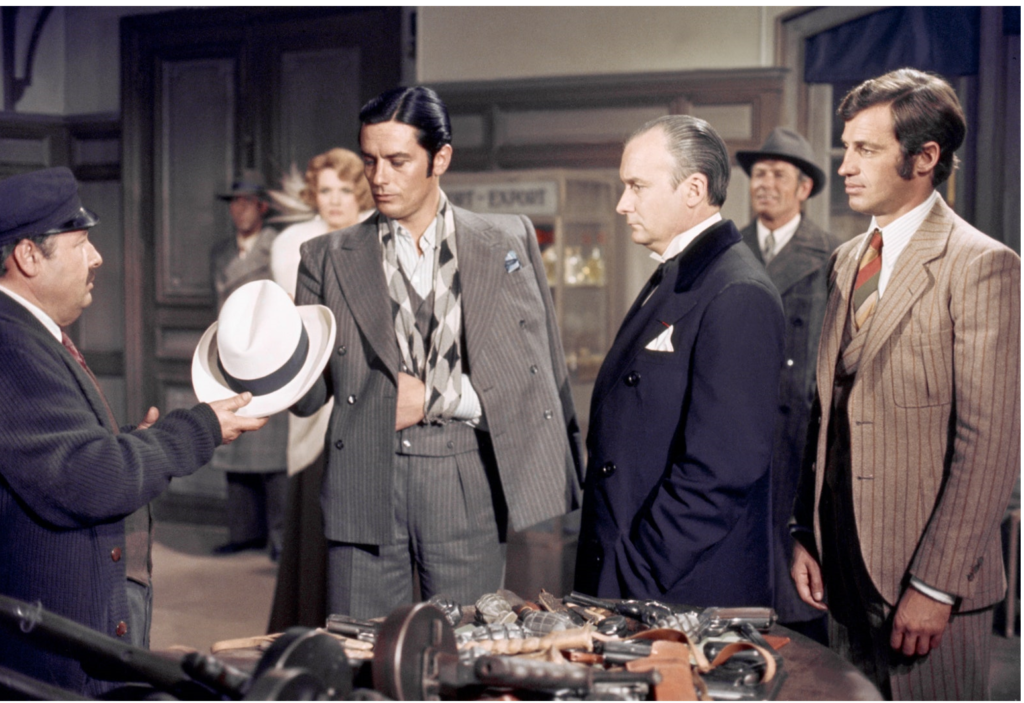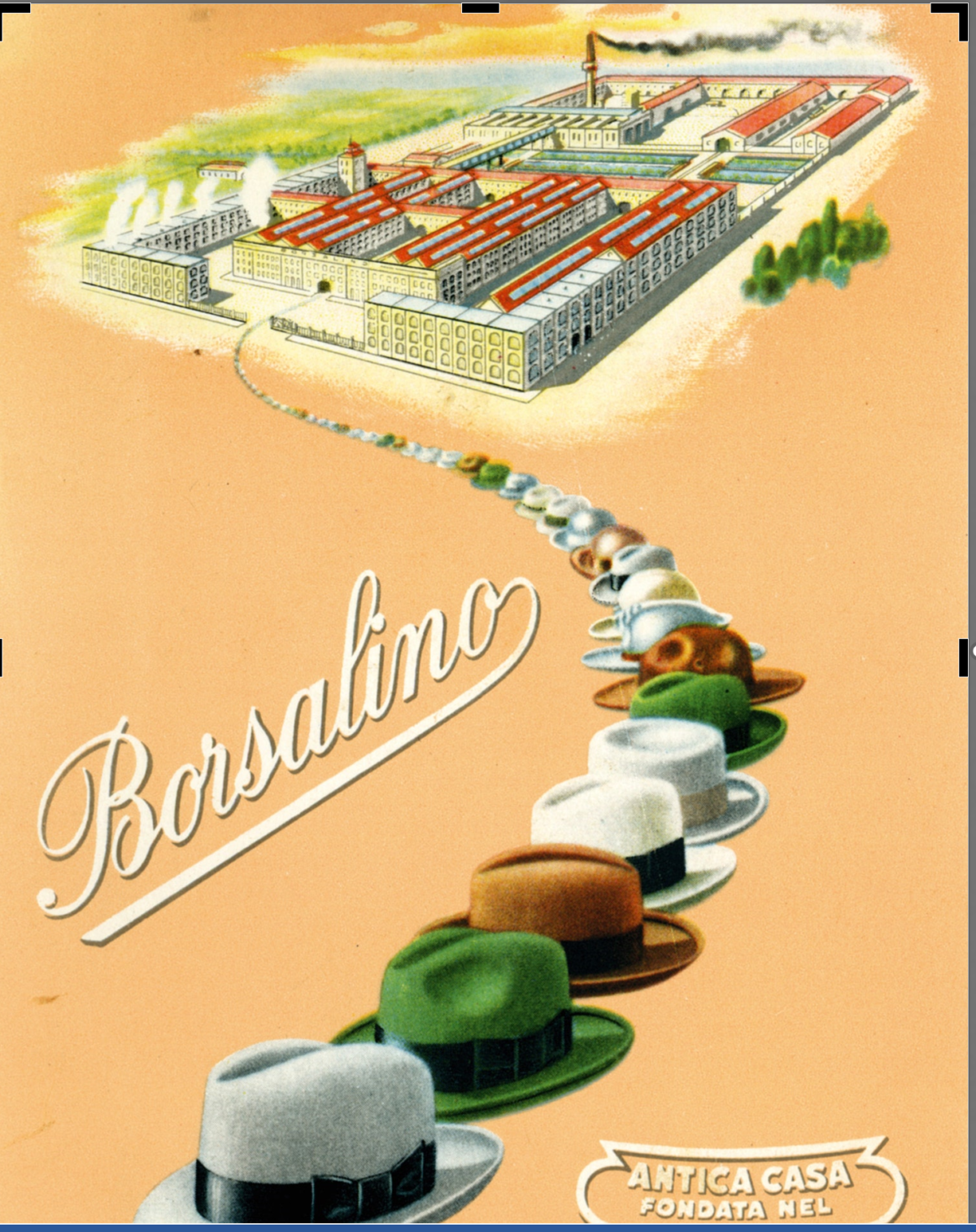
We are in Alessandria. It’s the year 1846. Giuseppe Borsalino is twelve years old and has been working for a few years. He is small, but he has big ambitions. He wants to make hats, but he needs to obtain a French certificate (Italy was under French domination) that allows him to sell and open a small workshop. So, with his piece of paper in his pocket and with the help of his brother Lazzaro, on April 4, 1857, he inaugurates the company “Borsalino Giuseppe & Fratello Spa” in a courtyard on Via Schiavina. The investment is significant: the hat-sewing machines come from England, which is the heart of the Industrial Revolution.
The small shop in Alessandria becomes the largest factory in the city and one of the first true champions of Italian exports (2 million hats produced in 1914), particularly in the foreign markets, especially the United States.
The success is immediate: in the early 1900s, everyone wore a hat, and most of them wore a Borsalino. In a short time, the word “Borsalino” appears among the entries of the Oxford Dictionary as a “common noun for a wide-brimmed felt hat.” The dictionary entry refers to a particular model created by Giuseppe Borsalino to comply with the etiquette that requires a man to remove his hat in the presence of a lady as a sign of respect. The hat maker reshapes the brim by pinching the front sides with his fingers, creating two dents (“bumps”) that become the gripping point of the hat. The result is a perfect combination of curves and lines that facilitate the grip.
The Borsalino hat is made in various qualities of fur, such as rabbit, hare, and coney. The fur is blended and blown into a special machine called a blower. The second step is the hat blocking, which is done using blocking machines. The production process of a Borsalino hat is intricate and requires 52 steps and 7 weeks of manual work by 60 artisans.
The creation of straw models, handwoven, can take up to 6 months for each individual hat. There are those who shape the hat, those who dye the felt, those who sew the label, and those who oversee the initial stages. As a result, what is obtained is not just a simple hat but a truly unique and artisanal piece.
The Borsalino brand quickly becomes a legend as its hats are worn by actors, celebrities, politicians, and even gangsters. It was Al Capone’s favorite hat, but the most iconic image remains Humphrey Bogart and Ingrid Bergman in the unforgettable final scene of the film Casablanca.

It is with this film that a special and lasting liaison between fashion and cinema is inaugurated, perfect for nurturing the myth of Borsalino worldwide. The Alessandria manufacturer allows the use of its name in two cult films of the 1970s: Borsalino and Borsalino & Co. The idea comes from Alain Delon, and Borsalino agrees on the condition that the company logo appears on the movie posters.

The Borsalino hat thus becomes the favorite of the noir genre. It is what unites gangsters, policemen, private investigators, and during the golden age of Hollywood, everyone wore one.
Over the past decades, production in Alessandria has gradually decreased. However, despite scandals, financial crises, and changes in ownership, Borsalino has continued its production.
In 2018,Borsalino was acquired by Haeres Equita, a company registered in Italy and owned by two entrepreneurs, Philippe Camperio and Edouard Burrus.
The strategy is to maintain production at the current facility in Alessandria and invest human and financial resources to support the growth of Borsalino because Borsalino is not just a regular company but a piece of Italian history. And after more than 160 years since its inception, the Borsalino hat still represents the Made in Italy.

One reply on “Borsalino: the story of a factory, of men, and their city”
Bellissimo!
Brava Lea!!!